We get rid of mold and mildew on the walls in the apartment correctly on our own
Black mold is the most dangerous enemy. It can attack concrete, plaster, wallpaper, paint, wood, plastic and many other materials, and is very toxic to the human body.
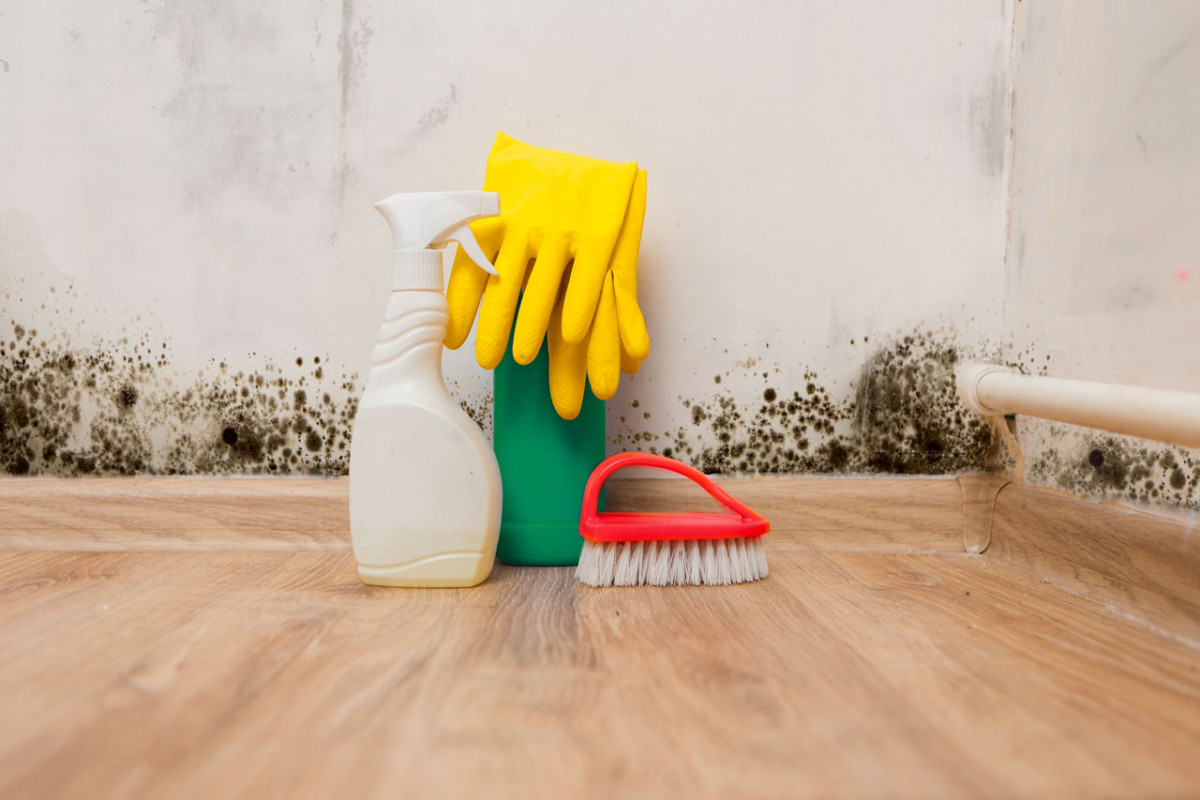
Mold, like fungus, develops from spores that multiply in the air. They grow fastest in a humid and warm environment. Therefore, the ideal conditions for breeding are the bathroom and poorly heated rooms without proper ventilation. By the way, ornamental houseplants that need frequent watering help create a favorable environment for mold growth.

Another source of distribution is bathroom curtains, so it is very important to keep cleanliness, and to wash and process the material with special means in time. In such cases, it is very important to think about a forced ventilation system - the pleasure is not cheap, but very effective.

Constantly staying in a room with mold is not only unpleasant (since a specific smell comes from it), you can also pick up some diseases:
- eye infections such as conjunctivitis and others;
- diseases of the oral cavity;
- skin fungal infections, eczema and dermatitis;
- respiratory tract diseases: laryngitis, bronchitis, asthma, allergies;
- problems with the musculoskeletal system.
One of the main causes of fungus is high humidity in the room. Favorite habitats: shower, bathroom, kitchen sink, window frames, attics, split-system filters and even washing machine drums.

In apartments, black mold most often appears, which spreads very intensively, and therefore the fight against it must be started as early as possible in order for the actions to be as effective as possible. For this, both proven household chemicals and all kinds of folk recipes are used.

With hydrogen peroxide
The simplest method is to treat the affected surface with a 3% hydrogen peroxide solution, which can be purchased at any pharmacy. It is better to repeat the procedure several times. You can wipe the surface with a cotton swab dipped in the solution, or from a spray bottle.
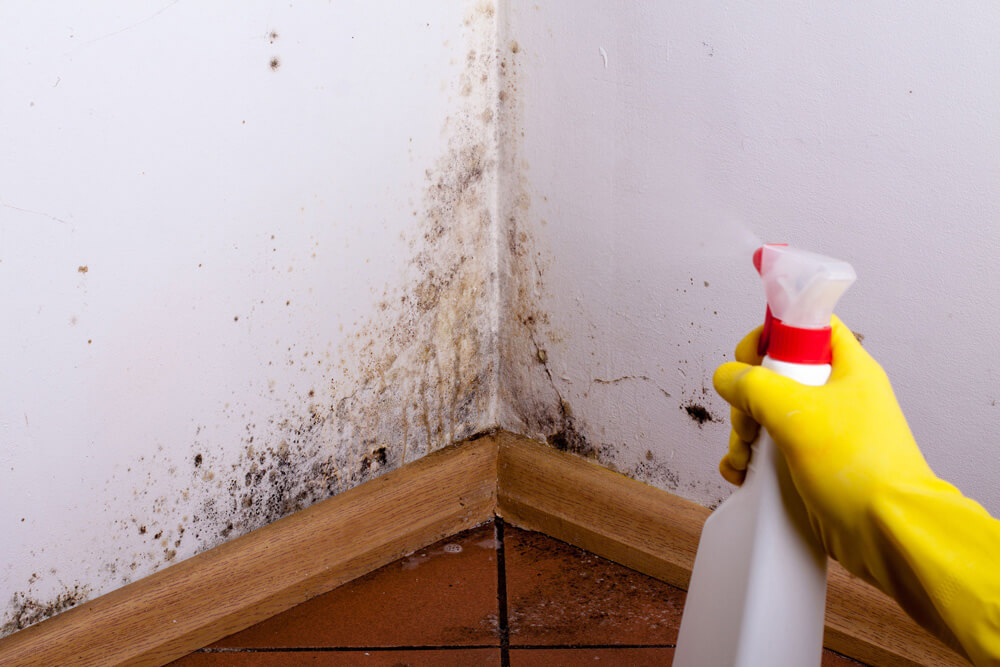
Peroxide is one of the best antibacterial agents, but it should be stored in a dark place, in a dark glass bottle with an airtight stopper.Otherwise, this chemical compound will split into oxygen and water, losing its universal properties.

During work, you should observe safety measures, and before starting treatment, you must put on glasses on your eyes, a mask or gauze bandage on your face, cover your head, take gloves.
We use ammonia
Another means of fighting fungal infections is ammonia. It is used both in pure and diluted form with ordinary water in a 1/1 ratio. However, this method is only suitable for flat and smooth surfaces such as tiles, glass or plastic. The surface is treated with a cotton pad dipped in a solution.

It should be borne in mind that ammonia has a rather pungent odor, so the cleaning procedure is best done in a well-ventilated area.
Killing mold with baking soda
Fungi cannot thrive in an alkaline environment, so a regular baking soda solution is an excellent remedy for mold on walls and other surfaces in your apartment. This option is ideal for those who cannot stand strong odors and are susceptible to toxins.

A glass of water and one teaspoon of baking soda are enough for the procedure. It can be repeated several times, depending on the degree of damage to the surface. Apply the product with a sponge, a small rag, or use a spray bottle. After processing, the solution may not even be washed off especially.

Using bleach
Household chemicals with a whitening effect are not natural, however, they are quite affordable. It should be borne in mind that these funds are quite aggressive, therefore they are diluted with water. The dilution method and proportions are indicated in the instructions on the bottle or at the rate of 1/10.
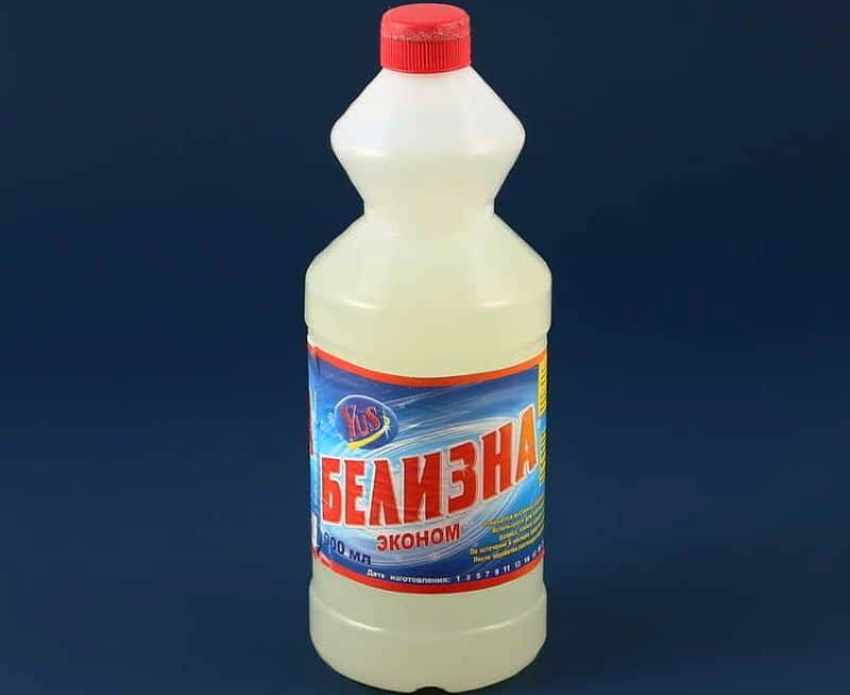
It is very important to think about protecting the skin and mucous membranes. The cleansing process is best done in a well-ventilated area. The solution is applied to the walls with a stiff brush. The procedure can be repeated once more, and then thoroughly clean the surface.
With borax
An effective folk remedy in the fight against fungi and mold. It is not hazardous to human health, it is a natural product and simultaneously acts as a herbicide, insecticide and fungicide.

The process begins by cleaning the surface of the mold with a damp cloth. Then the wall or plane is wiped with a hard brush with a solution, which is prepared as follows: 1 cup of borax is added to 2.5 liters of water. Then wipe the wall with a dry cloth.
It is not necessary to wash off the solution. Borax is often used for cleaning drains and toilets.
Citric acid
To combat, use citric acid or lemon juice, which act on mold in the same way as vinegar. Weak organic acid negatively affects the development of pliable.

To prepare the solution, you need 1 glass of water and 1 teaspoon of acid or juice. The resulting solution is used to clean the surface and do not wash off.
This is the ideal way to clean tile surfaces and grout joints.
Vinegar
There is an opinion that table vinegar is one of the best folk remedies for removing fungal infections in the bathroom and other areas on its own.
However, this method is not suitable for everyone, since vinegar has a rather pungent smell and can have a bad effect on the health of allergy sufferers.

The room must be well ventilated. Apply vinegar with a cloth and wipe the surface, or spray from a spray bottle (in this case, you should think about protecting your face and eyes). After processing, the surface is washed with water and the room is left to ventilate.
Grapefruit Seed Extract
The product resembles tea tree oil, is inexpensive, has an excellent odor and disinfectant properties. Solution preparation: dilute 10 drops of the extract in a glass of water. It must be sprayed and not washed off so that the properties protect the surface from new lesions.

Stationery glue
Folk wisdom has no boundaries. Craftsmen have learned to get rid of the fungus even with the help of ordinary office glue. The solution is prepared by diluting the glue with water in a 1/1 ratio.

The solution is applied to the surface several times, using a brush, without removing.
Remove with potassium permanganate
Common potassium permanganate has a detrimental effect on mold. To prepare the solution, you need to take 1 liter of water and 1 teaspoon of powder. Treat the surface with the resulting solution several times.

Hydrogen peroxide, boric acid and vinegar
Such a vigorous mixture allows you to remove the fungus in the apartment both on the walls and on other surfaces at the highest level. All components should be combined with water in a ratio of 4: 2: 2: 1, where 4 parts are water, 1 is vinegar, 2 are peroxide and boric acid.
The resulting solution is sprayed onto the surface several times and not washed off. The procedure should be carried out in a ventilated area, thinking about protecting the face, eyes, mucous membranes and hands.

Sometimes it is not enough to simply spray the stain with a solution to remove mold. Such methods are appropriate at the initial stage of the manifestation of the fungus. More serious lesions require removing wallpaper or plaster, and treating the wall with mortars that destroy not only fungi and mold, but also moss, yeast and algae. They are distinguished by their high fungicidal properties and deep penetration.

To prevent the reappearance of the fungus, you should adhere to some rules:
- carry out prophylaxis with antifungal detergents;
- wash walls more often and wipe dry in wet areas;
- organize good ventilation and ventilation;
- do not save on heating: the room must be dried, especially in the cold season;
- leave the bathroom door open;
- seal cracks around windows and consider additional wall insulation.

The most important thing is to comply with preventive measures:
- regular cleaning;
- ventilation and airing;
- high-quality heating and thermal insulation.
Once the mold has been removed, it is sometimes not easy to get rid of the odor. Here ordinary soda can come to the rescue, placed around the room in small containers, or charcoal briquettes. After a while, they will absorb unpleasant odors.

The possibilities of mold are often underestimated, and it is necessary to deal with it already at the first minor manifestations. In this case, the most important thing is to find and eliminate the root causes of its appearance and spread, otherwise all efforts may be ineffective. However, you should not despair, because you can always find the perfect protection option.
So, for example, in the bathroom, the joints between tiles and sanitary ware are most vulnerable. Black plaque appears most quickly in them, which does not wash off - this is mold. In this situation, the seams are cleaned with a metal scraper, and then the antiseptic grout and sealant are reapplied.
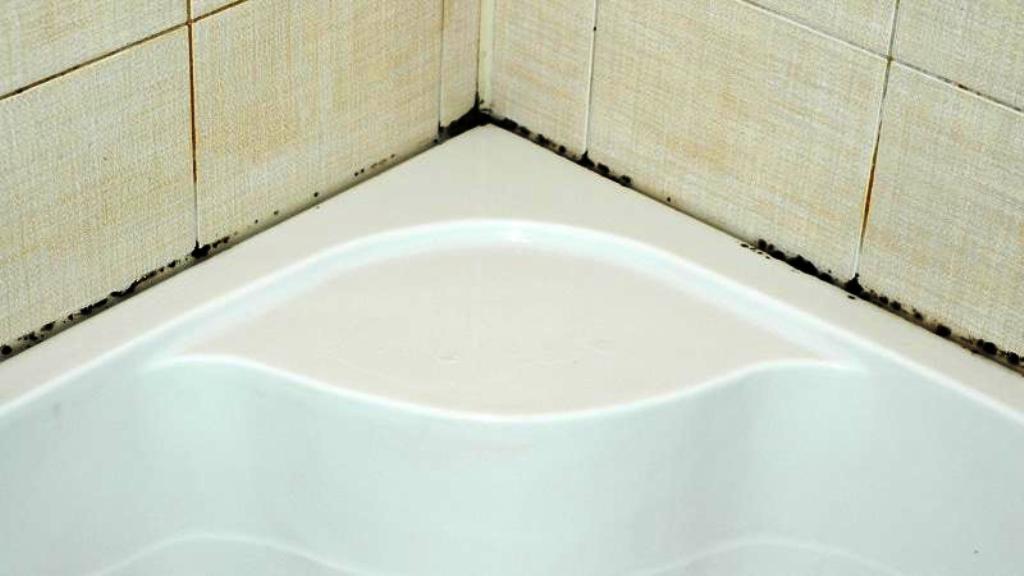
If mold has formed on the ceiling, moisten the surface with water, wait for a while until softened, and then remove the whitewash and plaster with a spatula. Next, the surface is treated with an antifungal agent and a primer is applied, which also includes antifungal agents. After it dries, a penetrating primer is applied, and you can proceed to further finishing the ceiling.
With minor manifestations of the fungus, solutions of whiteness, tea tree, soda or vinegar can be used to treat the ceiling.
The most difficult question is how to get rid of mold on the wallpaper. In rare cases, it is possible to preserve them and not spoil the color, preserve the drawing.
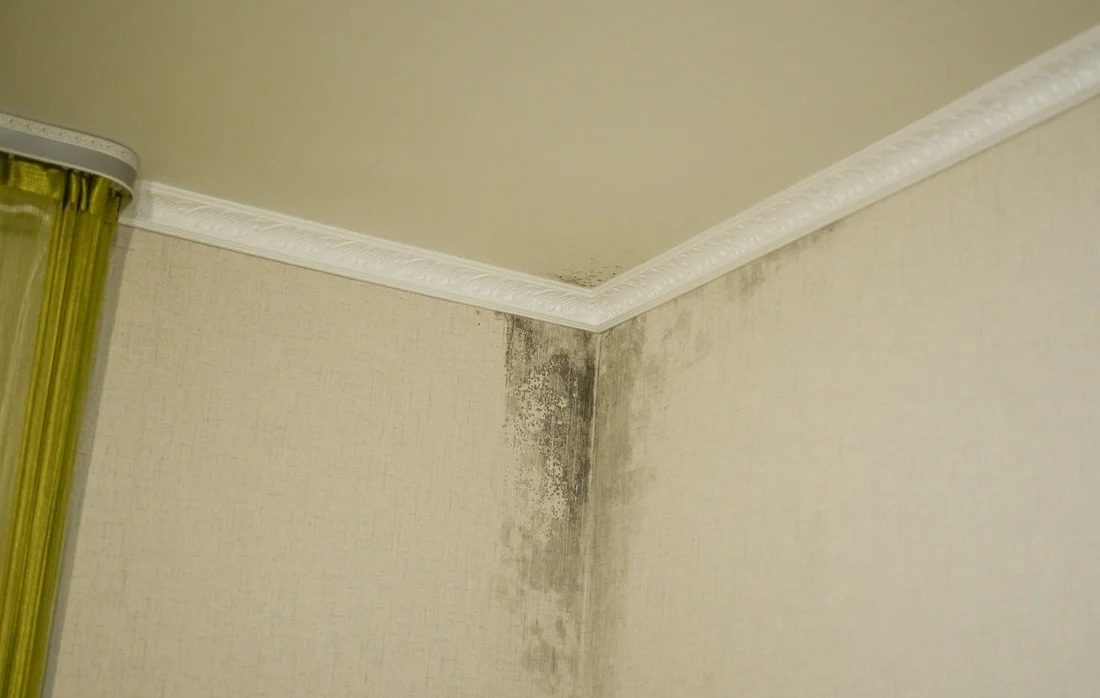
If the walls are painted, the mold is more likely to spread over the surface of the paint, so it will be enough to remove only the paint and varnish, and then proceed with serious means of protecting against fungi.
It will be more difficult to get rid of troubles on plasterboard walls or ceilings. Gypsum has a porous structure, which very well promotes the spread of spores into the material. Therefore, in this situation, the cardboard layer should be removed, and then proceed with the removal of the inner gypsum. After that, everything is treated with special means, a solution and a deep penetration primer, and then, after drying, everything is sealed with gypsum mortar.

If you do not fight the initial manifestations of the fungus, after 10-12 months the mold will eat not only plaster or wallpaper, but also get to concrete and brick, and this is already very serious.
In ancient times, people did not know how to deal with mold, so they abandoned their houses when it began to "absorb" their home. Nowadays, there are many means and ways to get it out, the main thing is to find the right one for yourself, not to panic and act in a comprehensive manner. To fight it is worth using any means, both folk and professional. In war, all methods are good. After all, the main thing is victory!

VIDEO: How to get rid of mold on the walls in the apartment.





